Also, kittens should not be separated – they should stay together. Only if one of them is sick, you can isolate him from the rest, put him in temporary quarantine.
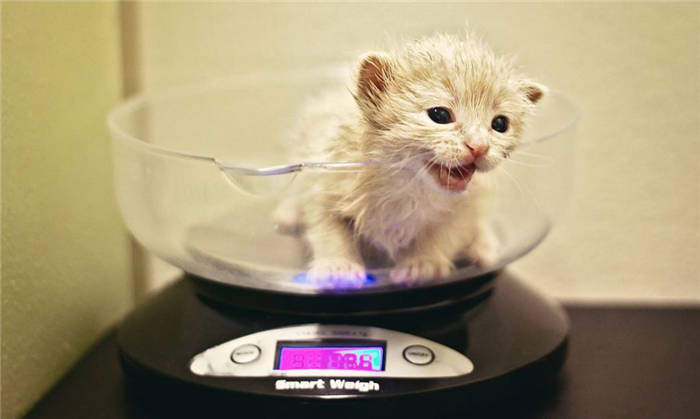
- Cat's milk
- Cat Milk Substitute
- Care after birth
- What and how to feed a kitten
- How to feed a kitten from a syringe: methods, portions, food, regime
- How to feed newborn kitten.
- How to care for two-month-old kittens
- Care at 3 months and older
- What to feed?
- How to arrange a place to sleep and play?
- What not to give to a kitten
- How to feed a kitten without a cat?
- How to Feed Kittens Properly from a Bottle
- What complications can be encountered
Cat's milk
Probably the most difficult and at the same time justified way is to find a kitten a feeder. Cat milk has a unique composition, it is full of fats and immunoglobulins, so it is ideal.
The process of communication between the baby and the nursing cat is not as simple as it may seem at first glance.
It is necessary for the cat to accept the kitten, its smell. To do this, you can first pet the nursing cat's native kittens, and then the baby that she will feed. If the cat does not reject it, then later difficulties should not arise.
Cat Milk Substitute
Cat milk substitute can be presented in liquid or powder form. The former has a much shorter shelf life.
The composition of this product is as close as possible to natural cat milk and necessarily contains components for kitten growth and development:
For example, Royal Canin's Babycat Milk for kittens from birth to two months is similar in composition to cat milk and contains highly digestible proteins and fatty acids. Babycat Milk is adapted to the kitten's digestive system: it has no starch, but it has prebiotics.
Docosahexaenoic acid in its composition contributes to the proper development and functioning of the nervous system, it is also found in natural cat milk.
Care after birth
If you picked up a kitten from the street, the first thing to do is Take it to the vet for a checkupThe baby may be infectious or sick. It is best to keep him away from other pets at first.
With domestic kittens it will be easier. Usually cats find their own place in an apartment or a house and arrange a "nest" for their future offspring. Sometimes these are not quite suitable options (on the couch or on the carpet), so choose it yourself.
A plastic bed with solid walls will do: on the bottom we recommend putting a mattress and a disposable diaper to protect the fabric. It should be placed where there is no drafts (babies are more prone to get sick than adults), and away from sunlight. You can buy a house or a soft cot. They will make the feline family feel cozy.
During the first 2 months Kittens should stay with their mother. Only after that it is recommended to give them to other people.

If the kitten does not have her mother by her side, put a heating pad or a container filled with warm water in the cot. This will give them a feeling of security and warmth.
Don't try to give the kittens to another calving cat: she might reject them or even throw them out of the "nest".
Attention! Babies are very sensitive to the temperature of the environment. You need to keep it at 25-31 degrees. If it drops below 21 degrees, replace the heating pad with a warmer one or put another one in. Buy a thermometer to keep track of the temperature.
If you feel that the kitten is getting cold, take him in your arms, wrap him in a warm cloth and hold him in your arms. Additionally, you can give him a 5-10% glucose solution from a bottle, as the increase in blood sugar contributes to a higher body temperature.
If there is no positive reaction to the warming and glucose solution Take your baby to the vet.
What and how to feed a kitten
Kittens are best fed a special mixture. This is not a complete food, but something like a cat milk substitute: it has all the necessary ingredients for the harmonious development of the new body.
Important: You should not feed newborn kittens cow's or goat's milk. It is not suitable for their nutrition.
To feed kittens, do not use pipettes or spoons. You'll only hurt them that way, because the formula could accidentally get into their upper airways. Better yet, buy bottles or nipples with an elongated thin end that resembles a cat's nipple.
Over time, the hole in the end of the bottle will enlarge from constant use. If it gets too big, you may want to replace the nipple with a different one.
You can also use a syringe, but check the piston: if it is too tight, the mixture can shoot down your throat.
The mixture itself should be diluted according to the instructions on the package. Watch its temperature: it should be neither too hot nor too cold.
Warm the mixture in a water bath. Check its temperature by putting a drop on your wrist. In no case do not heat it in the microwave: it may not heat evenly, and kittens will get a burn of the mucous membranes as a result.

Before diluting the powder, sterilize the bottles. You can use a baby sterilizer, sterilization tablets or regular boiling water. It is necessary so that the kitten does not pick up any disease through the pacifier.
While feeding, it is better to hold the kitten at an angle of about 45 degrees. Usually he stops sucking the pacifier when he is full. The amount of formula you need should be based on the age and weight of the baby. Don't rush him: let him eat at his own pace. If the milk got into the nose, quickly pump it out with a syringe without a needle or an eyedropper. It is very important to observe the multiplicity of feeding:
How to feed a kitten from a syringe: methods, portions, food, regime
Feeding a kitten is a cat's concern. But what to do in those cases where the parent is not around? Then a person has to take on the duties of a mustachioed mother and feed the kitten himself. There are many ways to feed the cat, but one of the easiest and most popular is to feed the kitten from a syringe.
Staff at the Murkosha shelter are often faced with feeding kittens, as there are too many abandoned animals on the streets. So we can confidently say that this is a simple and effective way.
Not only kittens but also adult cats and cats are fed from syringes. This is the case when the animal is sick and becomes so weak that it cannot eat solid food on its own. This is why special feeding syringes are sold in veterinary pharmacies. However, if you can not buy a tool, you can use an ordinary medical syringe for 10 milliliters or more. Of course, the needle must first be removed from it.
Even a small kitten may try to dodge or run away. Therefore, before you start feeding it should be secured. To do this, the baby is carefully wrapped in a towel and placed so that he could not move. The main thing is not to squeeze its legs and not to put pressure on its organs.
But these methods are used if the animal behaves aggressively. When it comes to a calm or very small kitten, it is necessary to arrange a feeding place for it that will resemble a mother cat. For this purpose, cuvettes are often used. A soft cloth, folded several times, is laid on the bottom. The kitten is placed inside so that it can rest its hind legs on the floor and its front legs on the side of the cuvette. The kitten is held by the back with one hand and the other on the side. This method is as safe as possible, because it is impossible to drop the kitten and injure her. Kittens like this feeding very much, because they can massage the cloth with their paws and take the position in which they usually suckle their mother cat.
How to feed
newborn kitten.
Ideally, kittens should stay close to their mother and feed from her for up to eight weeks before they are separated and/or given to other owners. When their birth mother needs to be rescued, when she dies or in circumstances where the cat refuses one or more kittens, human intervention is required. If you need to nurse a newborn kitten, you have a lot to consider. Careful attention and proper preparation will turn artificial feeding of a kitten into a calming and comforting procedure that will result in a happy and healthy pet.
1. Try to find another nursing cat. Ask veterinarians and animal shelters if they know where you can find a nursing cat who can take in someone else's kitten. Mother's milk is the best food for any mammalian infant, so before trying to bottle feed a kitten with special formula, it is advisable to look for a foster nursing mother who can take the place of an absent or abandoned birth mother.
Always be present when the foster cat
with the foster kitten; there is a risk that she will try to kill the kitten she will not accept. If luck is on your side and you find the feeder, try to hide the real smell of the foster kitten. Try petting the feeder cat's native kittens and then pet the foster kitten. This will help give the other kitten's litter's native scent. A cat is more likely not to accept a kitten if it smells completely different, so by "getting rid" of the kitten's real scent, you increase the chances of it being accepted by the cat.
2. Get milk. A newborn kitten can only digest milk, specifically cat milk. Feeding your kitten the wrong milk, such as cow's milk, can have its short-term and long-term consequences, including diarrhea, dehydration, nutritional deficiencies, and long-term health problems due to poor growth. You can buy a cat milk substitute for a kitten, look for it in pet stores, veterinary clinics or on the Internet. In Russia you can find cat milk substitutes of the brands Royal Canin, Beaphar, Canina and others. You can consult a veterinarian for specific recommendations on the choice of a specific and affordable formula in your area.
How to care for two-month-old kittens
Nutrition. From the second month onwards, the grown-up pet is transferred to a more extended menu. It includes lean meat (beef, turkey, chicken), saltwater fish, sour milk products, vegetables, cereal porridge. Kitten should not be offered river fish, bones, fatty whole milk, potatoes and pasta. Also excluded are any salty, smoked and spicy foods.
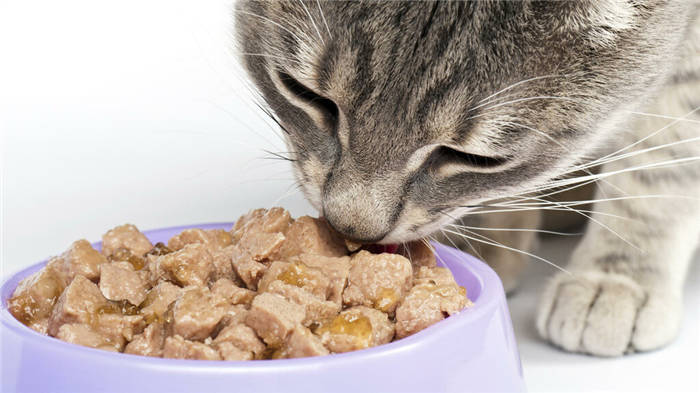
If you choose a ready-made food, it should be marked "for kittens. The frequency of feeding in this period is 5-6 times a day. A two-month-old kitten adds significantly in weight and the mark on the scales reaches 680-900 grams.
Toilet. The litter box is placed in a permanent place. At this age, the kitty is still poorly oriented and she has not developed the habit of going to the toilet in a certain place. Therefore, the task of the owner, who takes care of the kitten, is to help him get used to it. To do this, the pet is manually placed in the litter box. To attract attention, you can use special sprays, which are sprayed directly on the filler.
Hygiene. Procedures for the care of a kitten at 2 months of age remain the same. This cleaning of the ear pads with cotton disks, washing the eyes with boiled water, brushing the hair with special brushes. From two months of age kittens can be bathed. Kittens should be bathed not more often than once every 4-5 weeks.
Vaccinations. Immunization begins when the kitten is 2 months old. Vaccination helps to protect the still weak body against distemper, viral, rhinotracheitis, kalitsivirosis, rabies. Some polyvalent vaccines contain a component against chlamydia. Prior to that, the pet must be treated for parasites and worms.
Chipping. At 2 months of age a young cat may be chipped, although veterinarians believe that it may be done earlier, since the insertion of a microchip under the skin does not affect the health and well-being of the pet. The tiny microchip contains complete information about the cat: name, date of birth, address and other important data.
Care at 3 months and older
Nutrition. The diet of an adult fluffy at this period is very diverse: meat, fish, milk, cottage cheese, egg yolks, porridges, vegetables, cereals (except corn). The food can be offered in bite-sized pieces. But do not put the entire daily ration of food in the bowl at once. The pet has not learned to control its appetite, so it may eat too much. The norm of one feeding is 200 grams per 1 kg of weight of the animal. At 3 months, the kitten eats 400 grams of food per day, and at 4 months – 600 grams.
Hygiene. Kitten care includes the usual complex of hygiene procedures, which is supplemented by brushing teeth. By four months of age, all of the cat's teeth are erupting, so the prevention of dental problems in domestic recluse is mandatory. Teeth are brushed with small brushes and paste with a pleasant smell.
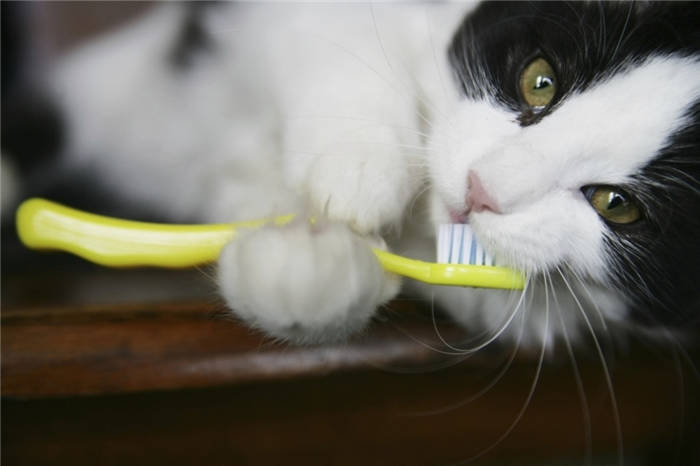
Vaccinations. At 3 months of age, the cat is vaccinated for the second time. Revaccination includes the same preparations that were used a month ago. The next vaccination is scheduled after one year. After the procedure, the well-being of the pet should be closely monitored. If apathy or restlessness, fever, sneezing, swelling in the injection area or other suspicious symptoms occur, you should contact the veterinary clinic.
The owner's excitement about caring for the kitten passes quickly. But if a pet is surrounded by care and attention, many problems bypass it. Kotofei grows and develops according to his age and enters adulthood healthy and cheerful.
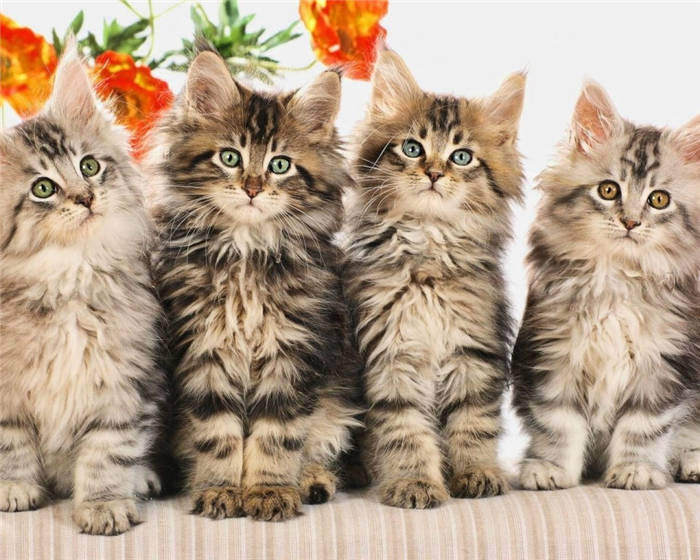
What to feed?
So, the most important and difficult thing is nutrition. Feed kittens from the first day of life to several weeks should ONLY special cat milk substitute, which can be purchased at pet stores.
You can find tips on the internet for making your own formula, but we strongly recommend that you do not resort to such recipes. Young kittens have very sensitive digestion, and improper nutrition can lead to their death. Also, feeding kittens under 2 months of age with cow's or goat's milk is categorically not recommended – it is too fatty and will cause diarrhea in the babies.
There are always detailed instructions on the package of cat's milk substitute to prepare the mixture.
The temperature of the mixture should be about 35-36 degrees. If you do not have a thermometer handy, just drop the mixture on your wrist: it should be warm, but not hot.
Never give kittens mixture that has been left standing for more than two hours. Always prepare the mixture just before feeding.
You can feed the kitten from a special bottle for newborn kittens (they are sold in pet stores). You can also feed the baby from an eyedropper or a small syringe without needles. It will be best if you have a full arsenal on hand.
Do not forget to sterilize all feeding equipment. Take a regular pot, fill it half full with water, bring the water to a boil, remove the pot from the heat, put all the equipment in the water and close the pot with a lid for 5-15 minutes. To protect your babies from germs as much as possible, do this procedure every day (better – before each feeding).
From about 4 weeks of age, the kitten is able to lap on its own from the bowl.
The kitten should lie horizontally on her tummy with her head slightly raised. If the kitten does not start to eat on its own, stroke its back or forehead. If you feed the baby with a syringe, be careful so that the baby does not choke.
An infant kitten, like an infant, needs to be fed very often:
How to arrange a place to sleep and play?
Naturally, kittens need to prepare a separate place so that they don't sprawl around the house and expose themselves to danger. Find a big box or buy a plastic terrarium in a pet store, put a heating pad or a bottle with warm water on one side, cover the whole space of the box with blankets or terry towels – a thick layer. Put a layer of diapers on top – this is what you will change (washing or throwing away) every day. Be sure to keep a high temperature in the room where the kittens are, and do not neglect hot-water bottles. In the place where newborn kittens stay, the air temperature should not be less than 30 degrees, from about the second week it can be gradually reduced to the familiar room temperature. Make sure that the kitten's playpen is always warm, dry and clean.
From about 4 weeks old kittens become very active. Be careful, if the walls of the box are not too high, the babies may try to get out of it.
And lastly, perhaps the most obvious thing. Try to pay attention to babies not only at feeding time. Hold them in your arms, pet them and spend time with them, especially if there is only one kitten. After all, you are a mother! Just like human babies, kittens need warmth and affection, and these are sorely missed when their mother cat isn't around. Gradually the kittens will grow up and you can play with them – again, this is especially important if the kitten is alone.
Be attentive with your foster children, observe their behavior. If you notice that the little ones are behaving strangely, become lethargic, don't eat well, lose weight, and so on – contact the veterinarian immediately.
Read more about signs of an unhealthy cat: signs of an unhealthy cat
In general, yes. As you've already figured out, you're not facing the easiest task, you need to mobilize all your strength over the next few weeks, change your priorities temporarily, and be as responsible and diligent as possible. And let it all sound a little intimidating – don't be afraid. The joy you'll feel at seeing your newborns healthy and growing up will be well worth the effort. And the kittens will be grateful to you for the rest of their lives. Staff at the Murkosha shelter have raised more than one or two generations of babies and are absolutely convinced that everyone is capable of taking care of them.
What not to give to a kitten
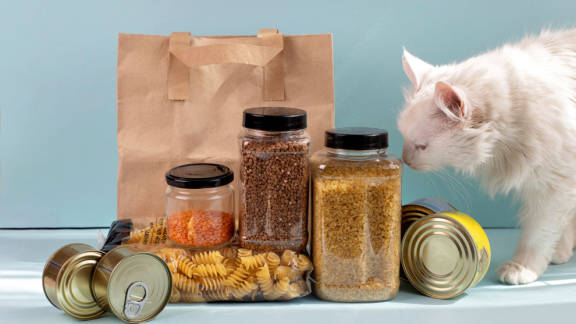
If the kitten's owner decides to stop eating natural food or in addition to the main meal likes to treat the kitten, it is important to know the list of dangerous products for cats and never give them to the kitten.
- Kitten can choke on them;
- Bones clog the stomach and intestines;
- Can even damage the esophagus or get lodged in it if swallowed unsuccessfully.
- Prevents digestion;
- Disrupts metabolism;
- May cause illness;
- Worsens the overall condition and appearance of the baby.
- Worsens the condition of the delicate gastrointestinal tract;
- May lead to chronic diseases.
- Leads to a metabolic disorder;
- Weakens the immune system;
- Deteriorates the condition of the teeth;
- Leads to diabetes;
- Xylitol in sweets can cause seizures and coma;
- Theobromine, found in chocolate, is poison to the pet.
- It contains many carbohydrates;
- Difficult to digest;
- Can cause colic and constipation, and yeast causes bloating.
- Provokes urolithiasis;
- May cause helminth infestation.
- May cause intestinal distress because the starch is not digested by the cat's body.
- Causes fermentation in the intestines and bloating.
- Causes kidney failure in cats.
Proper kitten nutrition is the basis for harmonious development, a strong immune system, and the ability to avoid many health problems in the future. Each owner with maximum responsibility should approach this issue, if he wants his pet to please him for many years.
How to feed a kitten without a cat?
Hello! You can feed a kitten without a cat with special cat milk substitutes. Using cow's or goat's milk can be dangerous: the amount of lactose in them is much higher than in cat's milk, and the fat, protein and minerals are lower. This difference will not provide the body with the necessary nutrients for growth and development, and may also provoke a disturbance of the kitten's digestive system. Diarrhea can cause rapid dehydration, which in turn can lead to unpredictable consequences. Royal Canin has developed a special product – a cat milk substitute called Babycat Milk.
Feeding kittens should be strictly according to the instructions. In the first week of life, you need 7 feedings a day, in the second week – 6, in the third and fourth week – 5 feedings. After feeding, you should lightly massage the anal area with a soft cloth soaked in warm water to stimulate urination and defecation of the kitten.
Starting at four weeks of age, kitten food can be introduced. At first it should be soft so that the kitten can learn to lick the food (e.g. Royal Canin Mother & Babycat Kitten Mousse). On the first day, its amount should not exceed 10-20 grams. On each of the following days the amount of mousse should increase and the amount of milk replacer decrease. In this way, by week 5-6, the kitten will have completed the transition from milk replacer to a ration of denser consistency. Royal Canin Mother & Babycat dry and wet diets are adapted for kittens during the weaning period and will help to ensure harmonious growth and development, as well as support the sensitive digestive and immune systems.
How to Feed Kittens Properly from a Bottle
Sterilize the utensils. Use a baby sterilizer, sterilization tablets, or regular boiling water. The immune system of newborn kittens is not yet formed, so it is not safe to expose them to viruses or germs through a pacifier.
Warm the mixture in a water bath. You can check the temperature by putting a drop on your wrist – it should be warm, but not hot. If you heat the mixture in the microwave, the liquid will be heated unevenly, and may leave a burn of the mucous membranes.
Get into a comfortable position. Sit on a couch or chair with a backrest and place the kitten on your lap. The baby should be lying on his stomach and sucking from a bottle in the same way that he is suckling from his mother's breast. Don't put him on his back and don't tip his head up; this can cause fluid to rush into his lungs and he could get pneumonia.
Take your time. Let your baby suckle at his own pace. Don't allow situations where he will choke. If you notice milk coming out of your nose, pump it out immediately with a syringe.
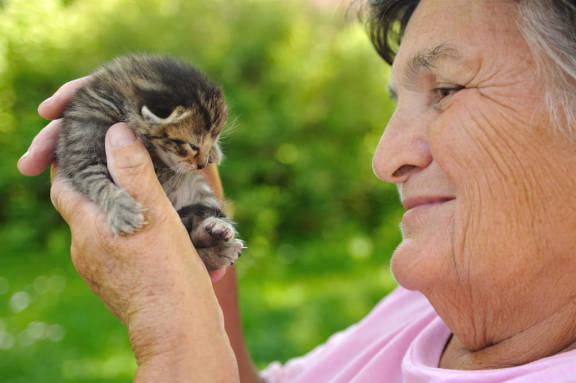
Do not force-feed or overfeed. If the kitten eats less than the proper portion, shorten the intervals between feedings or offer a little more next time. Some kittens eat less because of the natural way of their bodies. So you do not need to insist on larger portions. If the kitten does not feel full and asks for more, assess the condition of his stomach. If after feeding it became tight and dense, the baby is full and does not need more.
Stimulate the digestive process. To stimulate urination and defecation, massage the kitten's belly and wipe the genital area with a damp cloth, mimicking tongue licking – in the wild this task is performed by their mothers. Without additional stimulation, newborn kittens will not be able to empty their bowels and bladder.
What complications can be encountered
Aspiration pneumonia (pneumonia of the lungs). Occurs when amniotic fluid, milk or vomit is thrown into the lungs. Fluid enters the trachea when they inhale. But since the cough reflex in the first 10-14 days of life in kittens is not developed, they cannot cough it up and push it back out. As a result, lung tissue becomes inflamed and swollen, the airways stop functioning, and the animal dies. The first symptoms of the disease: heavy breathing, wheezing, gurgling, refusal to eat, weight loss, squeaking, weak sucking reflex, bluish mucous membranes. The disease develops within 1 week and is the leading cause of death in the first month of life. What to do. Thoroughly suction the fluid from the mouth and nose with a syringe at delivery. Slowly administer the mixture a drop at a time of artificial resurfacing, adhering to the rule "one sip – one drop".
2. Overcooling. Occurs due to low temperature in the nest and lack of food. Decrease in body temperature to 34 degrees leads to dysfunction of the stomach and small intestine and loss of the sucking reflex. Kittens are not yet able to maintain an optimal body temperature, and without an external source of heat, they will quickly become weak and stunted. The first symptoms of hypothermia: weight loss, weakness. If you put the kitten on your palm, the body does not tense, but remains lethargic and lifeless. What to do. Provide an external source of warmth. Monitor the feeding schedule and appetite.
3. Parasites. Occurs by transmission from the mother or failure to maintain sanitary conditions in the home. Symptoms of lesions: development of anemia, disruption of the integrity of the skin, weight loss. What to do. Limit access to walks for the cat. Thoroughly carry out wet cleaning. If infestation is detected, treat kittens with antiparasitic shampoo – kittens can be bathed at 1 month of age.
4. Conjuncted eyelids. Occurs due to breed and genetic features. First symptoms: kittens won't open their eyes on the third week of life. What to do. Rub their eyelids with a decoction of chamomile. Contact your veterinarian.






